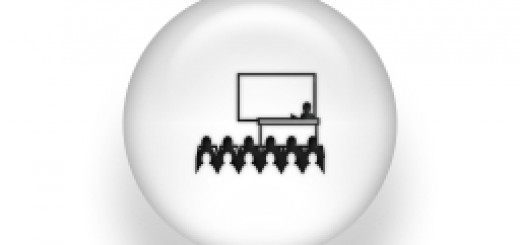The Tau-3 lattice, graphene’s big brother: transport and spectral properties
 Tuesday, 31st May 2011. 12:00-13.00
Tuesday, 31st May 2011. 12:00-13.00
Prof. Daniel Urban
Freiburg University
ABSTRACT:
Albeit the Tau-3-lattice exhibits a reciprocal lattice similar to graphene with two inequivalent Dirac-points at six corners of the hexagonal first Brillouin zone, where relativistic electron-hole symmetric bands touch, Tau-3 differs and considerably generalizes graphene. Peculiarities of Tau-3 are the occurance of an additional dispersionless energy band at energy E = 0 and an enlarged pseudo-spin S = 1 instead of S = 1/2 as for graphene. This leads to an enhanced “super” Klein tunneling through rectangular electrostatic barriers, compared to the case of graphene. Moreover, at the particular energy of half the barrier height we find even complete transparency, T = 1, irrespective of barrier thickness and of incidence angle. We also investigate rectangular magnetic barriers and in this case identify regimes of zero barrier transparency, qualitatively similar to the case of graphene. Furthermore, we investigate the Tau-3 lattice (and other related 2-dimensional lattices) with respect to them becoming a topological insulator when spin/orbit interactions are present. Topological insulators are band insulators with large spin-orbit interactions that exhibit the quantum spin-Hall (QSH) effect. Physical phenomena driven by topological properties, have the appealing feature to be robust with respect to external perturbations. We investigate the transition between QSH and normal insulating phases under topological deformations of a two-dimensional lattice, namely transformations between the honeycomb and the Tau-3 lattice and propose a method for verifying our predictions with fermionic cold atoms in optical lattices.
Bercioux, Urban, Grabert, Häusler, Phys. Rev. A 80, 063603 (2009)
Bercioux, Goldman and Urban, Phys. Rev. A 83, 023609 (2011)
Goldman, Urban, Bercioux, arXiv:1101.4500 (PRA, in press)

















